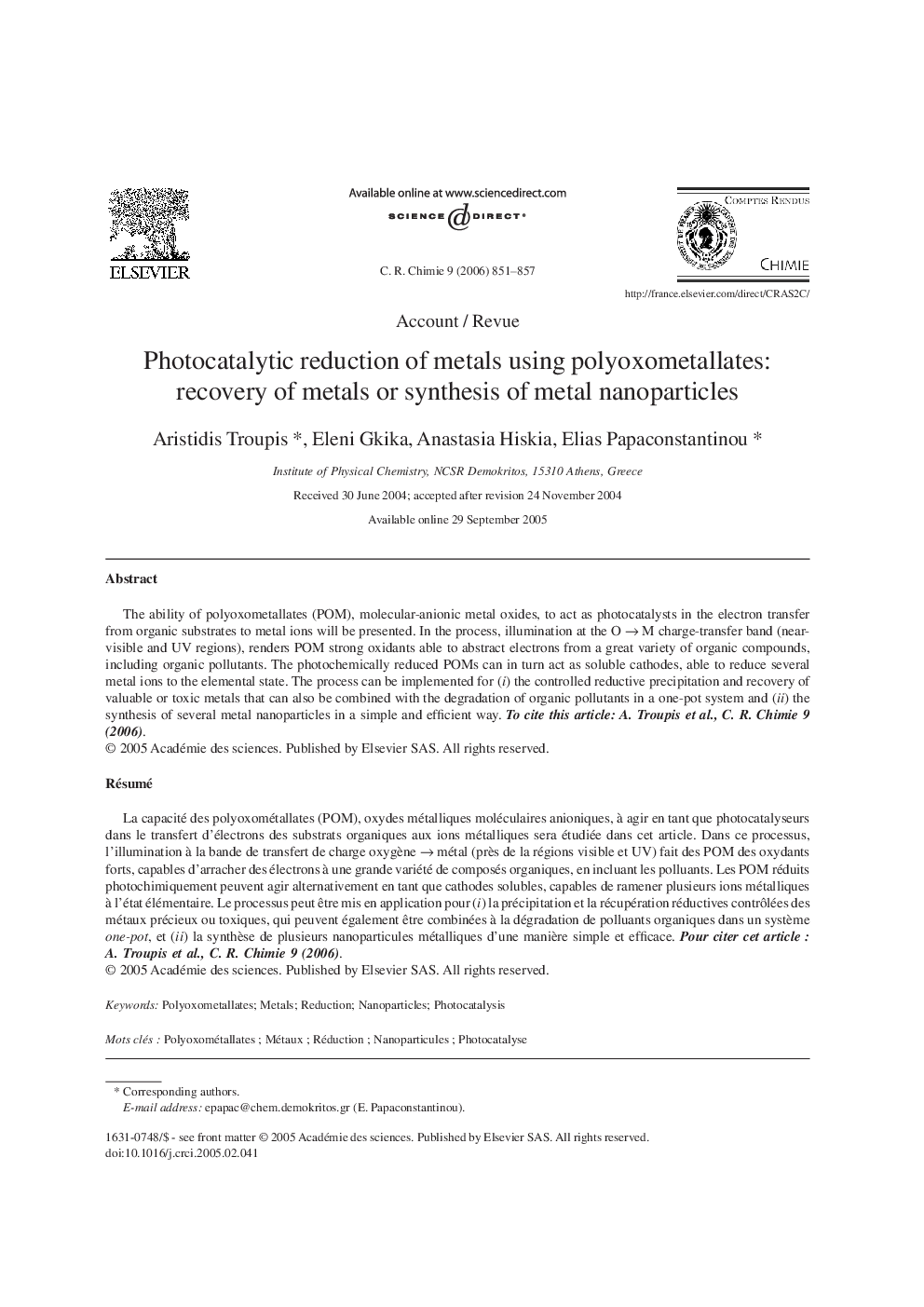| کد مقاله | کد نشریه | سال انتشار | مقاله انگلیسی | نسخه تمام متن |
|---|---|---|---|---|
| 171592 | 458466 | 2006 | 7 صفحه PDF | دانلود رایگان |

The ability of polyoxometallates (POM), molecular-anionic metal oxides, to act as photocatalysts in the electron transfer from organic substrates to metal ions will be presented. In the process, illumination at the O → M charge-transfer band (near-visible and UV regions), renders POM strong oxidants able to abstract electrons from a great variety of organic compounds, including organic pollutants. The photochemically reduced POMs can in turn act as soluble cathodes, able to reduce several metal ions to the elemental state. The process can be implemented for (i) the controlled reductive precipitation and recovery of valuable or toxic metals that can also be combined with the degradation of organic pollutants in a one-pot system and (ii) the synthesis of several metal nanoparticles in a simple and efficient way. To cite this article: A. Troupis et al., C. R. Chimie 9 (2006).
RésuméLa capacité des polyoxométallates (POM), oxydes métalliques moléculaires anioniques, à agir en tant que photocatalyseurs dans le transfert d’électrons des substrats organiques aux ions métalliques sera étudiée dans cet article. Dans ce processus, l’illumination à la bande de transfert de charge oxygène → métal (près de la régions visible et UV) fait des POM des oxydants forts, capables d’arracher des électrons à une grande variété de composés organiques, en incluant les polluants. Les POM réduits photochimiquement peuvent agir alternativement en tant que cathodes solubles, capables de ramener plusieurs ions métalliques à l’état élémentaire. Le processus peut être mis en application pour (i) la précipitation et la récupération réductives contrôlées des métaux précieux ou toxiques, qui peuvent également être combinées à la dégradation de polluants organiques dans un système one-pot, et (ii) la synthèse de plusieurs nanoparticules métalliques d’une manière simple et efficace. Pour citer cet article : A. Troupis et al., C. R. Chimie 9 (2006).
Journal: Comptes Rendus Chimie - Volume 9, Issues 5–6, May–June 2006, Pages 851–857